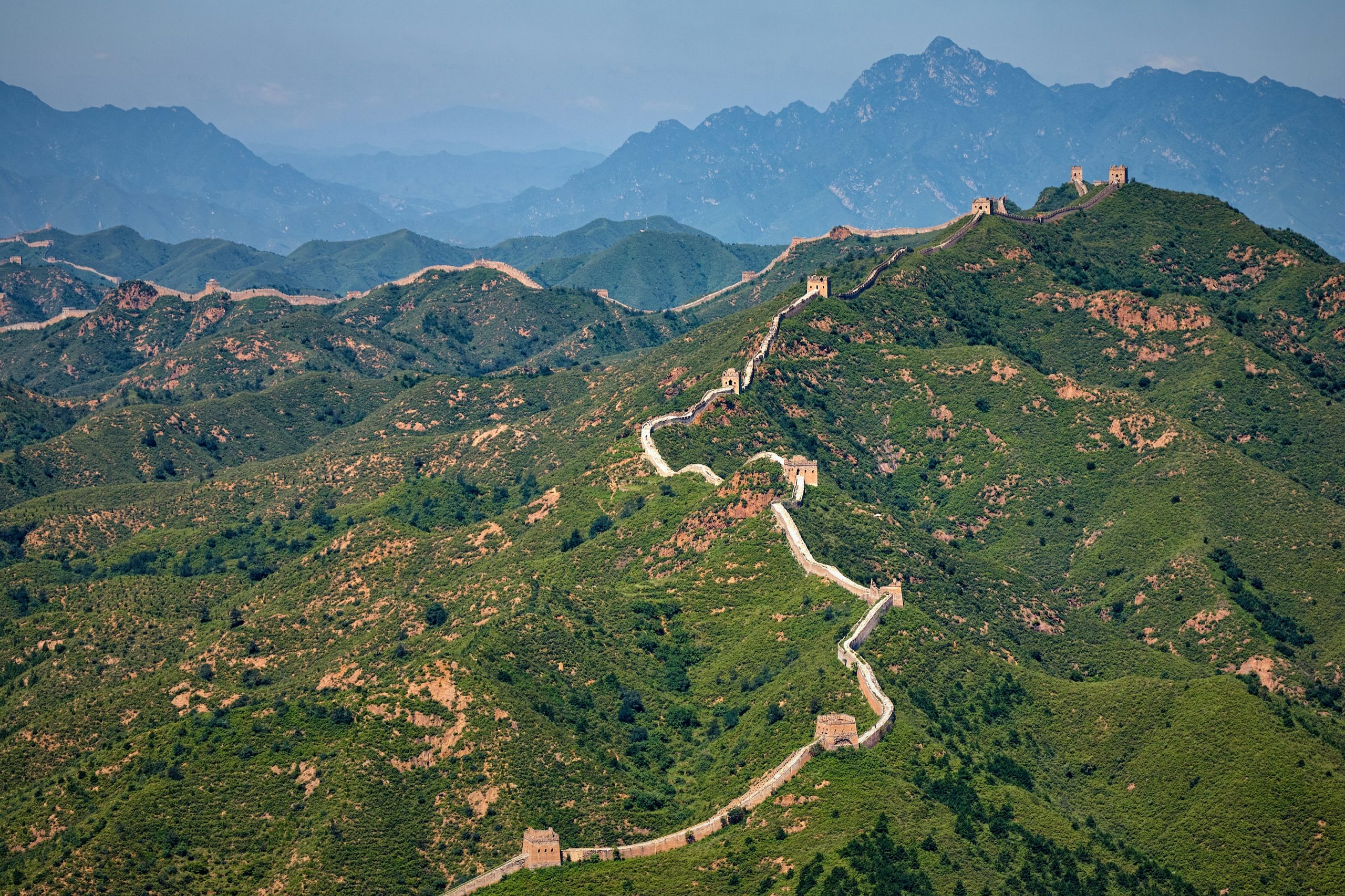Discover the breathtaking wonders of the majestic Yangtze River! Explore its beauty, history, and cultural significance in this captivating article. Embark on a journey along this awe-inspiring waterway and prepare to be amazed by its hidden treasures.
Natural Splendor of the Yangtze River

Exploring the Majestic Yangtze River
The Yangtze River, a symbol of China’s rich history and natural beauty, offers a breathtaking blend of wonders waiting to be discovered. From its meandering flow through picturesque landscapes to its historical significance and cultural treasures, a journey along the Yangtze River promises an unforgettable experience.
The Three Gorges: Nature’s Masterpiece
As one of the most iconic attractions along the Yangtze River, the Three Gorges stand as nature’s masterpiece, captivating visitors with their sheer grandeur and beauty. Each gorge – Qutang, Wuxia, and Xiling – boasts its unique allure, from steep cliffs and mist-shrouded peaks to tranquil waters reflecting the surrounding landscapes.
Three Gorges Dam: Engineering Marvel
The Three Gorges Dam, a remarkable feat of modern engineering, is a testament to China’s ambition and innovation. Rising majestically along the Yangtze River, this colossal structure not only provides hydroelectric power but also serves as a protective barrier against flooding, showcasing the harmonious blend of nature and technology.
Shibaozhai Pagoda: Cultural Gem
Nestled along the banks of the Yangtze River, the Shibaozhai Pagoda stands as a testament to China’s rich cultural heritage. This ancient architectural marvel, with its stunning red walls and intricate design, offers a glimpse into the country’s past and traditions, inviting visitors to immerse themselves in history and spirituality.
Fengdu Ghost City: Mythical Realm
Legend has it that Fengdu Ghost City is where the spirits of the deceased gather, creating a mythical realm shrouded in mystery. This eerie yet captivating destination along the Yangtze River allows visitors to explore ancient temples, statues, and folklore, offering a unique insight into China’s beliefs and traditions surrounding the afterlife.
Embarking on a journey along the Yangtze River is a gateway to a world of wonders – from awe-inspiring natural landscapes to historical landmarks and cultural treasures. Each stop along the river unveils a new chapter in China’s story, inviting travelers to delve deeper into the country’s past and present. The Yangtze River, with all its marvels, promises an enriching and unforgettable experience for those seeking adventure, tranquility, and a deeper connection with nature and history.
Cultural Heritage Along the Banks

Exploring the Rich Cultural Heritage Along the Yangtze River Banks
Embarking on a journey along the legendary Yangtze River is not only an awe-inspiring experience of natural beauty but also a captivating exploration of China’s rich cultural heritage. As you cruise along the banks of the Yangtze, you will encounter a tapestry of traditions, history, and ancient wonders that have shaped the region for centuries.
Historic Sites and Architectural Marvels
The Yangtze River is lined with a myriad of historic sites and architectural marvels that offer a glimpse into China’s storied past. From the majestic Three Gorges Dam, a modern engineering feat, to the ancient Shibaozhai Pagoda perched high on a cliff, each structure tells a tale of bygone eras and dynasties. Exploring these sites allows travelers to immerse themselves in the country’s cultural legacy.
Local Customs and Traditions
Along the Yangtze River, travelers have the opportunity to interact with local communities and witness traditional customs firsthand. From the graceful art of tea ceremonies to the vibrant performances of Chinese opera, each encounter offers a deeper understanding of the region’s rich cultural tapestry. Engaging with locals provides insight into age-old traditions that have been preserved through generations.
Artistic Treasures and Handicrafts
The banks of the Yangtze River are also home to a treasure trove of artistic wonders and exquisite handicrafts. Visitors can admire intricate pottery, delicate silk embroidery, and dazzling calligraphy, each showcasing the skill and artistry of the local artisans. Exploring these artistic gems offers a glimpse into the creativity and craftsmanship that define the cultural landscape of the region.
Culinary Delights and Flavors of the Region
No exploration of a region’s cultural heritage is complete without savoring its culinary delights. Along the Yangtze River, travelers can indulge in a diverse array of dishes that reflect the unique flavors of the region. From savory Sichuan hot pot to delicate steamed dumplings, each bite is a sensory journey through the tastes and traditions of China.
Preservation Efforts and Sustainable Tourism
As travelers uncover the cultural wonders along the Yangtze River, it becomes evident that preserving these heritage sites and traditions is paramount. Sustainable tourism practices and conservation efforts are essential to safeguarding the region’s cultural legacy for future generations. By supporting local communities and initiatives, visitors can contribute to the preservation of the Yangtze River’s cultural heritage.
Embark on a voyage along the Yangtze River, where every bend reveals a new chapter in China’s cultural history. From ancient temples to bustling markets, the cultural heritage along the riverbanks invites travelers to connect with the essence of this extraordinary land.
The Three Gorges Dam: Engineering Marvel

Discovering the Three Gorges Dam
The Three Gorges Dam stands as a testament to human ingenuity, a colossal structure nestled along the majestic Yangtze River in China. Spanning over 2 kilometers in length, this engineering marvel is a sight to behold, captivating the minds of all who encounter its grandeur.
Engineering Feat and Environmental Impact
The construction of the Three Gorges Dam involved immense planning and execution. The dam serves multiple purposes, from flood control and hydroelectric power generation to improving navigation along the Yangtze River. Its sheer size and complexity make it a remarkable feat of modern engineering.
Impact on the Surrounding Landscape
While the dam has brought significant benefits in terms of power generation and flood prevention, it has also altered the landscape of the region. The rising waters of the reservoir have submerged villages and archeological sites, forever changing the face of the Three Gorges area.
Challenges and Controversies
Despite its advantages, the Three Gorges Dam has faced its share of challenges and controversies. Environmental concerns, such as the impact on water quality and wildlife habitats, have sparked debates about the true cost of such a monumental structure.
Visitor Experience and Tourism
For travelers seeking a glimpse of this engineering wonder, visiting the Three Gorges Dam offers a unique experience. Witnessing the sheer scale of the dam and learning about its construction process provide insight into China’s ongoing technological advancements.
Appreciating Nature’s Resilience
Amidst the concrete walls and steel gates of the dam, nature continues to thrive along the Yangtze River. The surrounding landscape, with its lush greenery and mist-shrouded mountains, reminds us of the resilience of the natural world in the face of human intervention.
The Three Gorges Dam stands as a symbol of human innovation and ambition, a structure that commands respect and admiration. As we marvel at its engineering prowess, let us also reflect on the delicate balance between progress and environmental stewardship along the banks of the mighty Yangtze River.
Flora and Fauna Diversity
Discovering the Rich Biodiversity of Yangtze River
The Yangtze River, one of the world’s most magnificent waterways, is not only renowned for its stunning landscapes and cultural significance but also for its exceptional biodiversity. Let’s delve into the mesmerizing world of flora and fauna wonders that call the Yangtze River home.
Flora Marvels Along the Yangtze River
The Yangtze River basin boasts a remarkable diversity of plant life, with lush forests, wetlands, and meadows creating a vibrant tapestry of color and life. Here, you can find a plethora of plant species, from towering trees to delicate flowers, each playing a crucial role in the ecosystem.
Notable Fauna Species of the Yangtze River
The Yangtze River is a haven for a wide array of iconic animal species, some of which are endemic to this region. From the majestic Chinese river dolphin to the adorable giant pandas that inhabit the bamboo forests along the riverbanks, the wildlife here is truly awe-inspiring.
Challenges and Conservation Efforts
Despite its natural splendor, the Yangtze River faces numerous environmental challenges that threaten the delicate balance of its ecosystem. Overfishing, pollution, habitat destruction, and climate change pose significant risks to the flora and fauna of the region.
Preserving the Natural Heritage
Efforts are underway to protect and conserve the biodiversity of the Yangtze River, with organizations and local communities working together to safeguard this invaluable natural heritage. By raising awareness, implementing sustainable practices, and supporting conservation initiatives, we can ensure that future generations can continue to marvel at the wonders of the Yangtze River.
Explore the wonders of the Yangtze River, where the rich biodiversity of flora and fauna beckons you to immerse yourself in a world of natural beauty and diversity like no other.
Historical Influence on Chinese Civilization
The Majestic Yangtze River: A Pillar of Chinese Civilization
The Yangtze River, the longest river in Asia and third longest in the world, has played a pivotal role in shaping the rich tapestry of Chinese civilization throughout the ages. From its majestic waters to the breathtaking landscapes it traverses, the Yangtze River is a treasure trove of historical significance that has influenced the course of Chinese history.
Connecting Past and Present: Trade and Cultural Exchange
Throughout history, the Yangtze River has been a vital artery for trade and cultural exchange in China. Serving as a crucial transportation route, the river facilitated the movement of goods, people, and ideas, contributing to the flourishing of commerce and cultural interactions along its banks.
Architectural Marvels: The Three Gorges Dam
One of the most remarkable feats of engineering along the Yangtze River is the Three Gorges Dam. Stretching across the river, this colossal structure not only harnesses the power of the river for energy production but also serves as a symbol of China’s modernization and technological prowess.
Historical Significance: The Yangtze River in Chinese Mythology
The Yangtze River is steeped in myth and legend, with numerous tales depicting its importance in Chinese folklore. From stories of mythical creatures dwelling in its waters to accounts of legendary battles fought on its banks, the river holds a special place in the collective imagination of the Chinese people.
Environmental Impact: Preserving the Legacy of the Yangtze
As China continues to develop and modernize, efforts to preserve the ecological balance of the Yangtze River have become increasingly vital. Conservation initiatives aim to safeguard the river’s unique ecosystem and protect its diverse array of flora and fauna for future generations to appreciate and enjoy.
Economic Importance of the Yangtze River
Exploring the Economic Significance of the Yangtze River
The Yangtze River, known for its breathtaking beauty and cultural significance, also plays a vital role in the economic landscape of China. Let’s delve into the various aspects that highlight the economic importance of this majestic river.
1. Transportation Hub
Stretching over 6,300 kilometers, the Yangtze River serves as a crucial transportation artery, facilitating the movement of goods and people across regions. Its navigable waters allow for cost-effective transportation of commodities, fostering trade and commerce along its banks.
2. Agricultural Heartland
The fertile plains surrounding the Yangtze River create an agricultural haven, supporting the cultivation of rice, wheat, and other crops. The river basin’s rich soil and ample water supply sustain a significant portion of China’s agricultural output, contributing to food security and economic stability.
3. Hydropower Generation
With its numerous tributaries and hydroelectric dams, the Yangtze River harnesses the power of water to generate electricity. Hydropower stations along the river produce a substantial portion of China’s electricity, reducing dependence on fossil fuels and supporting sustainable energy initiatives.
4. Industrial Development
The Yangtze River basin is home to several industrial cities and manufacturing hubs, driving economic growth and employment opportunities. Industries situated along the river benefit from easy access to water resources, transportation networks, and a skilled workforce, facilitating production and trade.
5. Tourism and Recreation
The scenic beauty and cultural heritage of the Yangtze River attract millions of tourists each year, contributing significantly to the local economy. Cruise tourism, in particular, has flourished along the river, offering visitors a unique perspective of China’s landscapes and traditions while stimulating economic growth in the tourism sector.
The Yangtze River stands as a symbol of economic vitality and prosperity, playing a multifaceted role in shaping China’s economy. From transportation and agriculture to energy generation and tourism, the economic importance of the Yangtze River reverberates across industries and sectors, underscoring its significance as a lifeline for development and growth.
